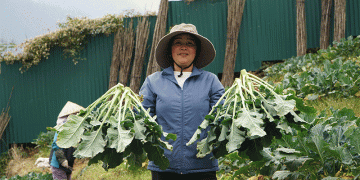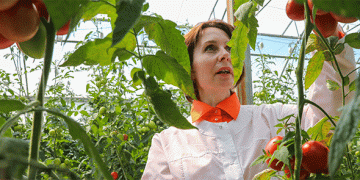As Kazakhstan approaches the New Year, the government is actively deploying its stabilization funds to curb rising vegetable prices. According to official reports, nearly 160,000 tons of vegetables have been collected in these “product reserves,” with over 13,000 tons already sold to stabilize market prices. Among these, 7,200 tons of potatoes, around 2,000 tons each of carrots and onions, and 1,700 tons of cabbage have been distributed to keep essential goods accessible for the public.
Deputy Prime Minister Serik Jumangarin emphasized the importance of this strategy in managing consumer costs and ensuring the availability of essential products. “The Ministry of Agriculture, together with regional aitys (local government), has been tasked with maintaining price stability and ensuring a wide variety of products are available at affordable prices,” Jumangarin stated. These efforts include selling stabilization vegetables not only through regular retail channels but also at agricultural fairs and markets, providing citizens with access to lower-cost goods.
In November, Kazakhstan experienced a 1.1% rise in food prices, according to official data. This increase reflects broader trends of global food price hikes, compounded by supply chain disruptions and seasonal shortages. The government’s deployment of stabilization vegetables has been a crucial response to these challenges, aimed at mitigating the impact of these price increases on consumers, especially as the country faces inflationary pressures.
“Over the past few months, we’ve seen significant volatility in food prices globally, affecting many countries,” said Jumangarin. “In Kazakhstan, the goal of the stabilization fund is not just to control prices, but also to ensure that essential vegetables are accessible throughout the year, not just during shortages.” The Ministry of Agriculture, in collaboration with regional authorities, has worked to distribute these products through a combination of strategic reserves and targeted sales at subsidized prices at rural fairs and marketplaces.
The stabilization fund, with its focus on maintaining supply and price stability, has been particularly important in light of global agricultural challenges. In November, Kazakhstan also saw a 0.7% increase in the index for non-food items and a 0.8% rise in prices for paid services. These figures underscore the broader economic context in which these stabilization measures are being implemented, as the country works to manage rising costs across the board.
“Despite the success in deploying vegetables from the stabilization fund, our challenge remains to maintain this balance between supply and demand throughout the year,” Jumangarin concluded. “As we move forward, the Ministry of Agriculture will continue to monitor prices and ensure that the reserves are replenished as needed to provide long-term price stability for consumers.”
Kazakhstan’s strategic use of stabilization funds to manage vegetable prices highlights the government’s proactive approach to controlling inflation and ensuring food security in the face of global supply chain disruptions. By maintaining a robust system of reserves and implementing targeted sales strategies, the country is better positioned to absorb shocks in the agricultural sector and provide affordable access to essential goods for its citizens.































